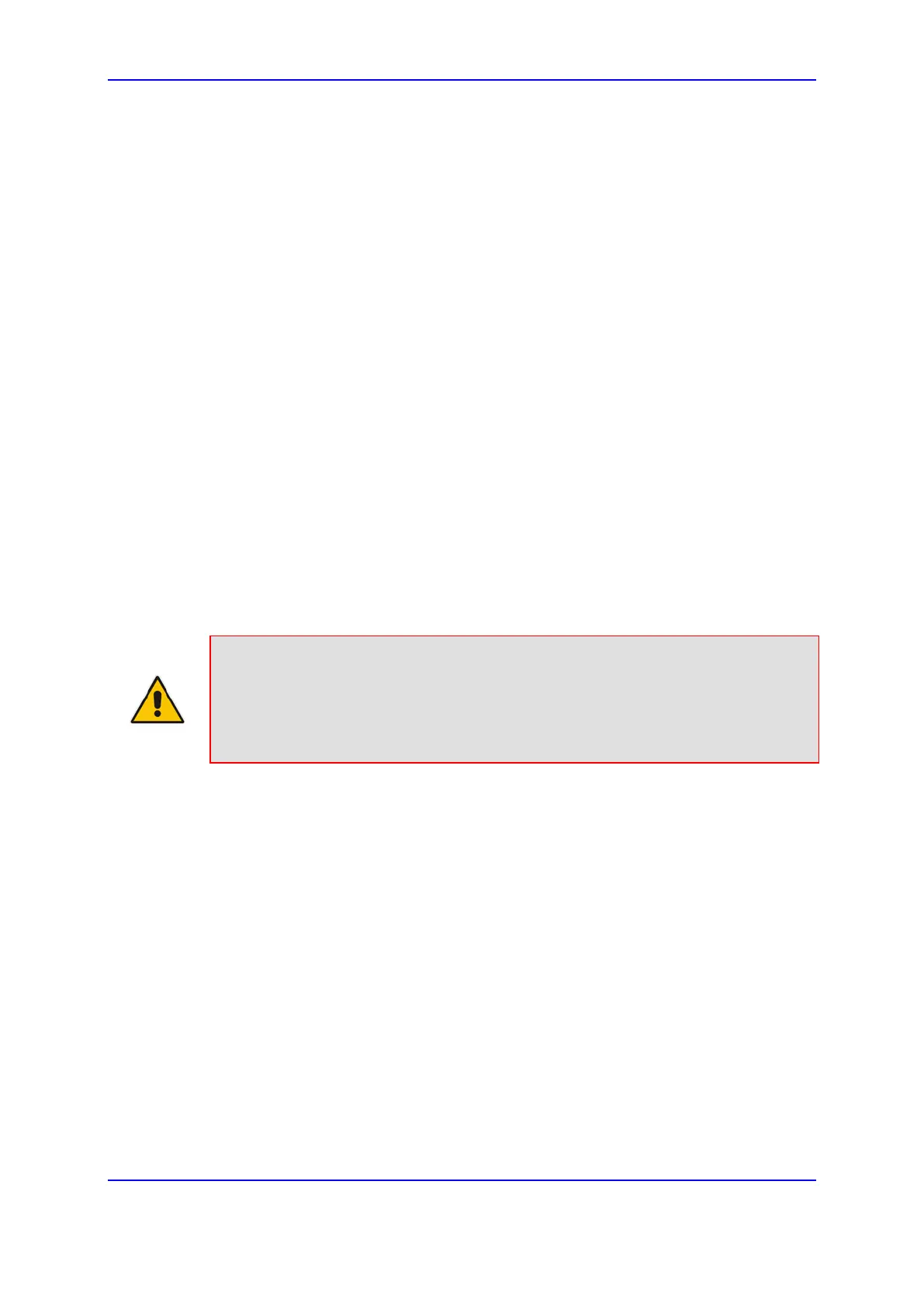Version 7.0 335 Mediant 3000
User's Manual 18. Control Network
18.2.3 Cloning SRDs
You can clone (duplicate) existing SRDs. This is especially useful when operating in a
multi-tenant environment and you need to add new tenants (SRDs). The new tenants can
quickly and easily be added by simply cloning one of the existing SRDs. Once cloned, all
you need to do is tweak configuration entities associated with the SRD clone.
When an SRD is cloned, the device adds the new SRD clone to the next available index
row in the SRD table. The SRD clone is assigned a unique name in the following syntax
format: <unique ID>_<original SRD index>_CopyOf_<name or index if no name of original
SRD>. For example, if you clone SRD "SIP-Trunk" at index 2, the new SRD clone is
assigned the name, "36454371_2_CopyOf_SIP-Trunk".
The SRD clone has identical settings as the original SRD. In addition, all configuration
entities associated with the original SRD are also cloned and these clones are associated
with the SRD clone. The naming convention of these entities is the same as the SRD
clones (see above) and all have the same unique clone ID ("36454371" in the example
above) as the cloned SRD. These configuration entities include IP Groups, SIP Interfaces,
Proxy Sets (without addresses), Classification rules, and Admission Control rules. If the
Routing Policy associated with the original SRD is not associated with any other SRD, the
Routing Policy is also cloned and its' clone is associated with the SRD clone. All
configuration entities associated with the original Routing Policy are also cloned and these
clones are associated with the Routing Policy clone. These configuration entities include
IP-to-IP Routing rules, Inbound Manipulation rules, and Outbound Manipulation rules.
When any configuration entity is cloned (e.g., an IP-to-IP Routing rule) as a result of a
cloned SRD, all fields of the entity's row which "point" to other entities (e.g., SIP Interface,
Source IP Group, and Destination IP Group) are replaced by their corresponding clones.
Note: For some cloned entities such as SIP Interfaces, some parameter values may
change. This occurs in order to avoid the same parameter having the same value in
more than one table row (index), which would result in invalid configuration. For
example, a SIP Interface clone will have an empty Network Interface setting. After the
clone process finishes, you thus need to
update the Network Interface for valid
configuration.
To clone an SRD:
Web interface: In the SRD table, select an SRD to clone, and then click the Clone
button.

